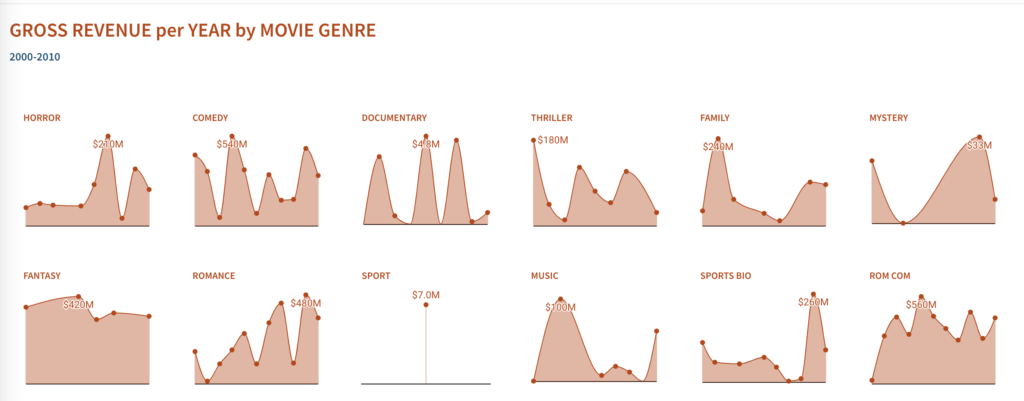Can you make a small multiples chart?
Introduction
Edward Tufte, often called the godfather of data visualization, brought a minimalist, no-nonsense approach to presenting information. In his seminal 1983 book The Visual Display of Quantitative Information, he introduced a now-iconic concept: small multiples — a simple but powerful way to show data through repetition and clarity.
Small multiples make comparison easy by showing the same chart structure across categories. With consistent scales and formatting, they highlight patterns and differences without overwhelming the viewer.
Have some fun and use any data you like. Here, I’m taking a gander at some movie data…
Cheers!
Carter
Need Access to Sigma?
Click here to sign up
Link to Sigma WoW Instance
Click here to Watch: How to Register & Get Started with Sigma WoW
Note: You will only have view access to WOW Workbooks, Folders, and Workspaces, not edit access. Please create your WOW Workbooks under “My Documents.” We suggest creating a folder to organize all your workbooks.

Click to Open an Interactive Workbook
Requirements
- Clean the data:
- US only and for the years you’d like to analyze
- Apply filters for other dimensions and dates to fit your project
- Create a chart
- Format the chart as you’d like
- HINT: You’ll likely get some unique ‘shapes’ from the data, so choose formatting that isn’t too busy
- Pick any color that warms you up! (I’m using #BF4000 here)
- From there, create your small multiples!
- HINT: since you’ll be duplicating the initial chart, be sure it’s formatted to a T so you don’t have to back-track
Dataset
IMDB 5000 Movie Dataset
https://www.kaggle.com/datasets/carolzhangdc/imdb-5000-movie-dataset
Share
After you finish your workout, share on LinkedIn, Sigma’s Community page, (or Twitter) using the hashtags #WOW2024 and #SigmaComputing, and tag Ashley Bennett, Eric Heidbreder, Katrina Menne, Carter Voekel, and Michal Shaffer!
Create an interactive, sharable version of your solution here.
Also, make sure to fill out the Submission Tracker so that we can count you as a participant this week to track our participation throughout the year.
Solution
Coming soon…